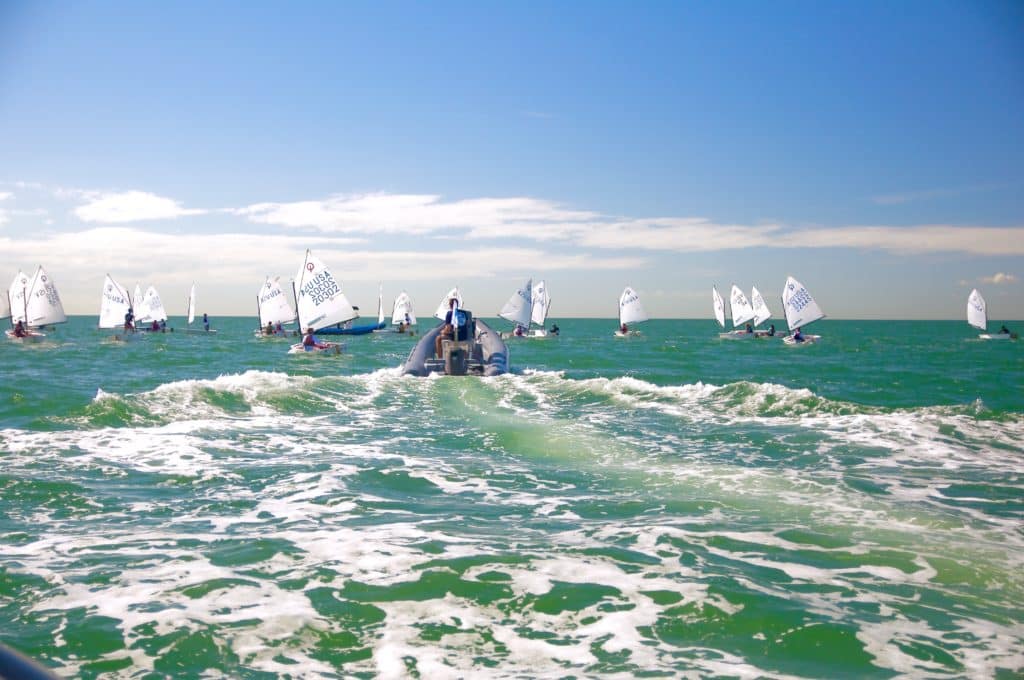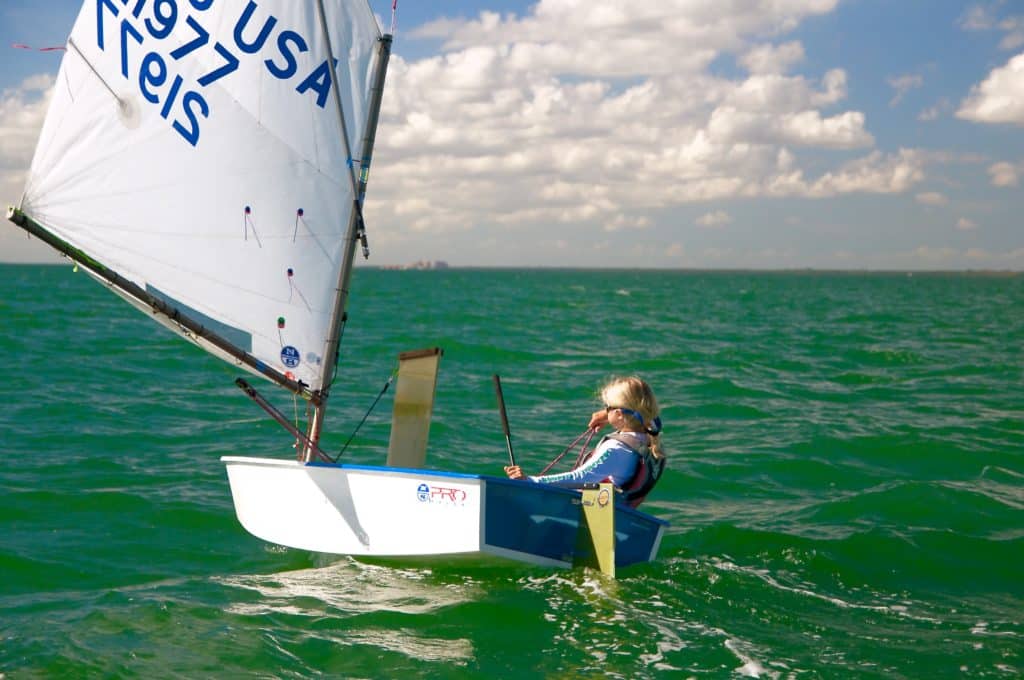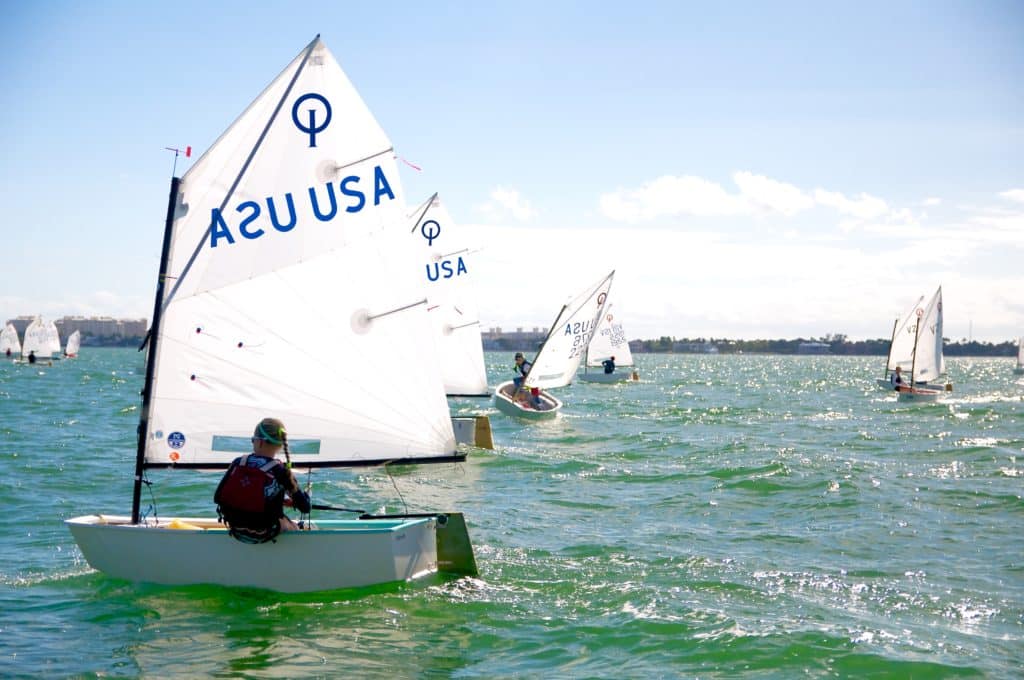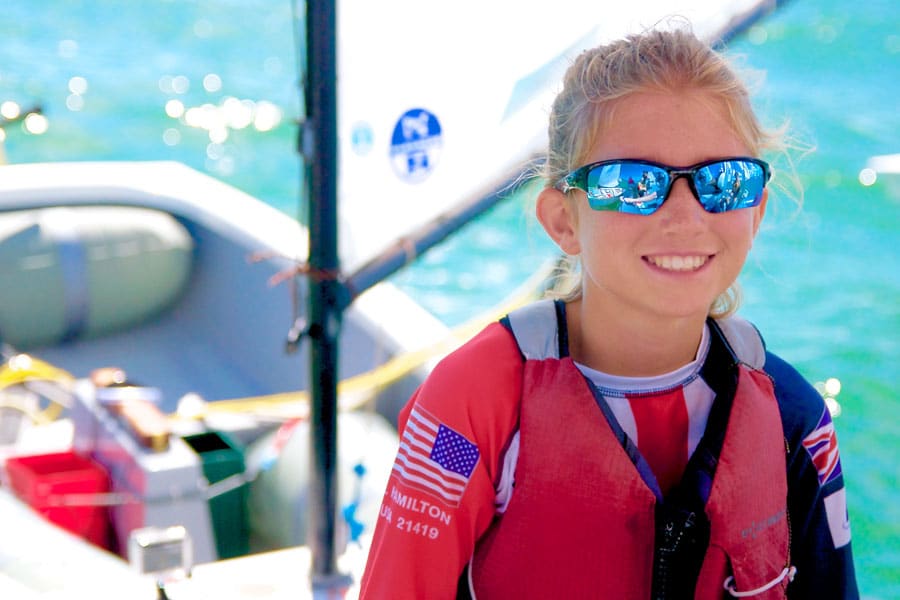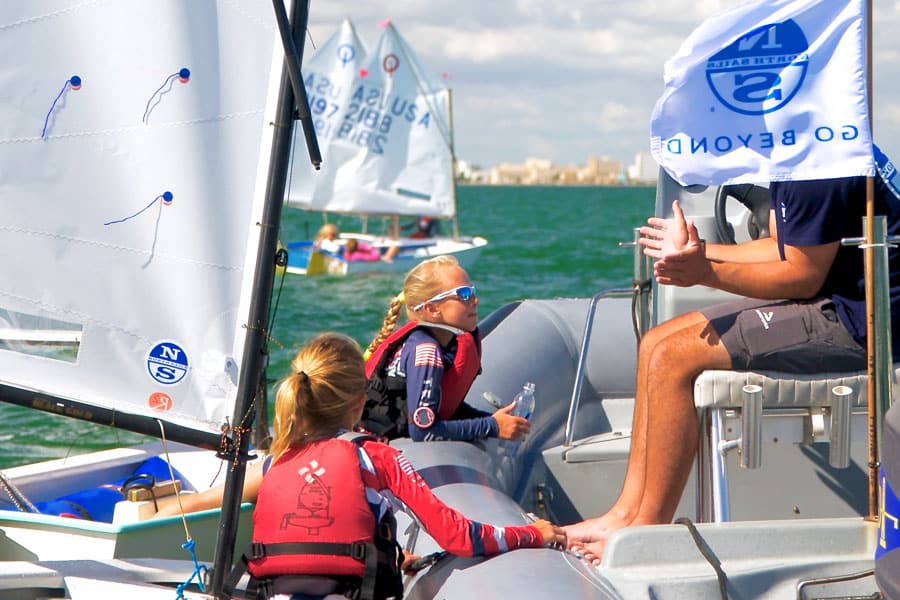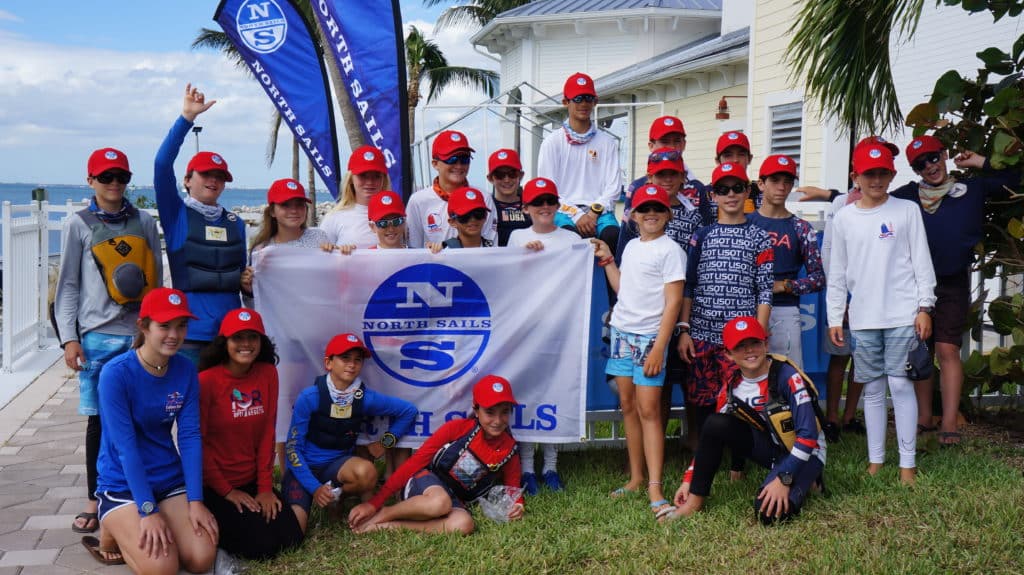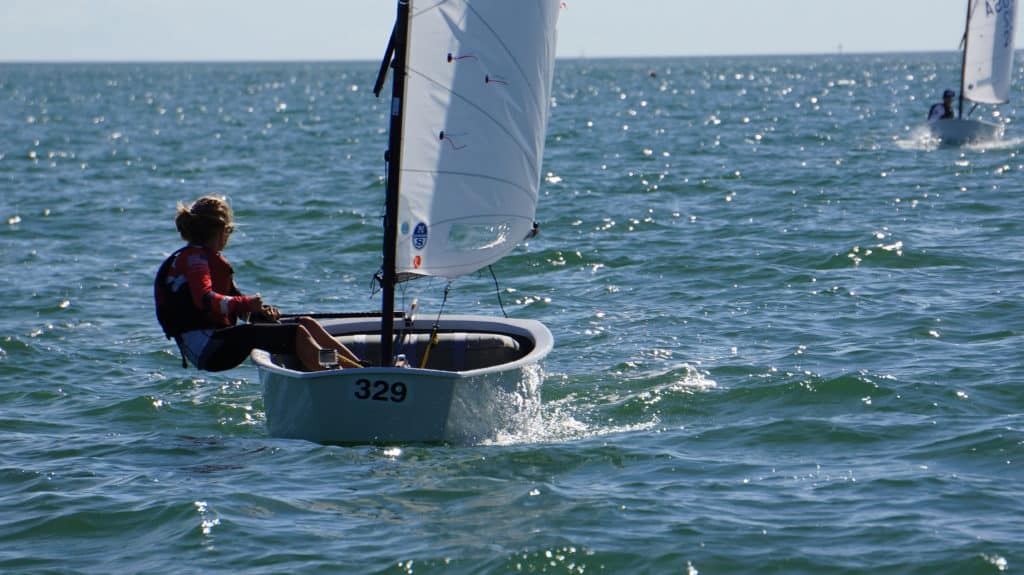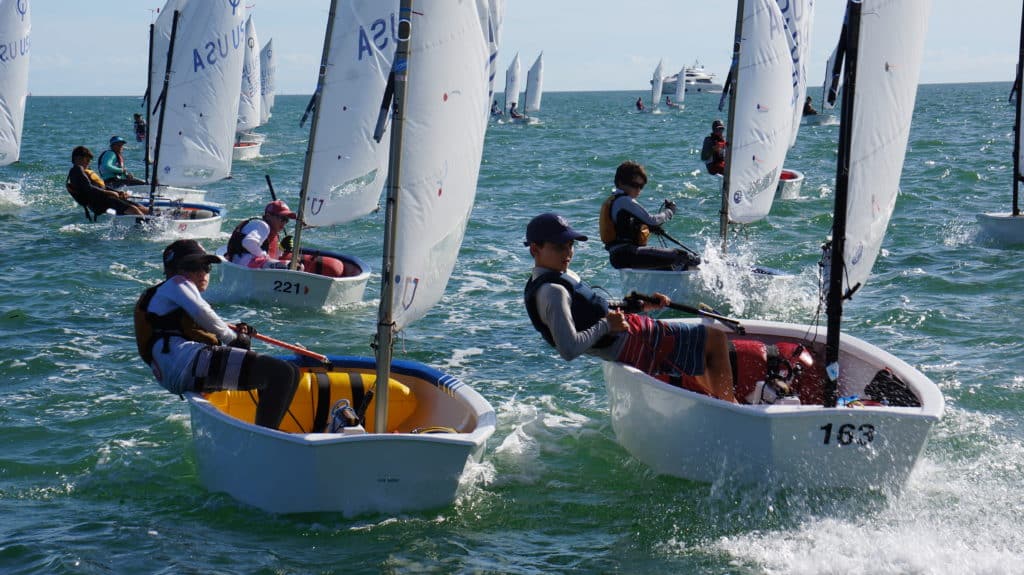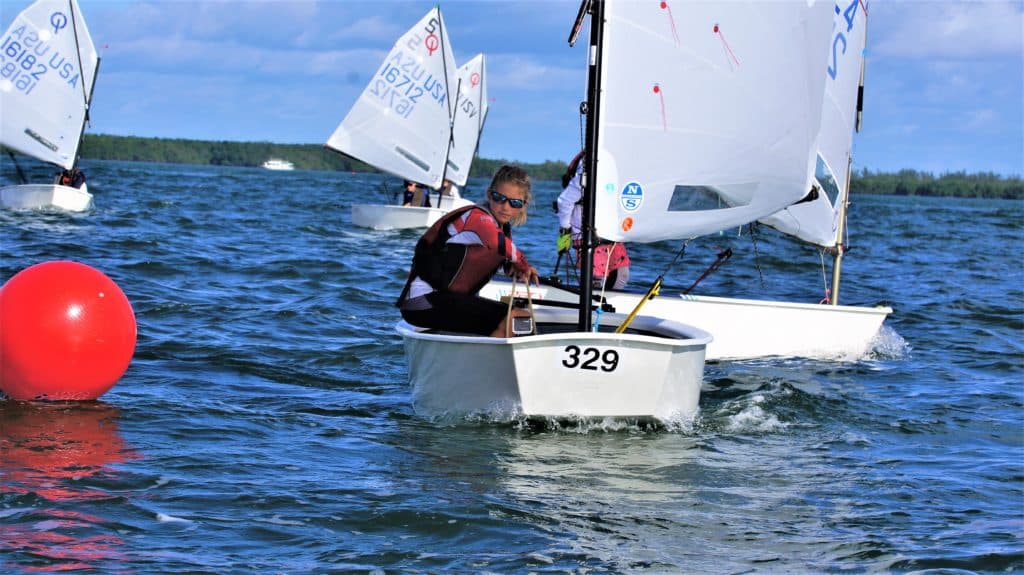In conjunction with the Southeast Dinghy Championships, North Sails hosted the inaugural North U Leading Edge Optimist Clinic at Key Biscayne Yacht Club to get sailors ready to take on the winter sailing season. Thirty-three Opti sailors from throughout the US, Puerto Rico, and the Virgin Islands participated in this first edition, which featured a curriculum spanning two days of on the water training and classroom sessions.
The sailors were challenged by a number of drills and races during the clinic, where boat handling, speed, and tactics all came into play. Miami delivered fresh conditions of sunshine and 10-15 knots of wind, a great platform for fun competition with new friends. North Sails Head Coach, Juan Carlos Romero, and Optimist expert Zeke Horowitz kept a close eye on the fleet to encourage participation and foster new experiences. Emphasis was placed on asking the sailors to think independently, as Juan explains,
“On the second day of the clinic, our main focus was to work with the sailors on their ability to develop a good strategy (game plan) and to help them make good tactical decisions. We incorporated two drills that forced our fleet to go through this thinking process, and then implement their tactical knowledge at its best to be able to execute their game plan.”
North Sails coaches reported the most effective drills were “Pick a Side” and “Long Line Starts”. In the Pick a Side drill, sailors learn to come up with a game plan and execute their decision to see how they end up at the top mark. The Long Line Starts drill gives sailors great practice in being able to tell how close they are to the start line by avoiding any potential line-sag.
North Sails designer, Mike Marshall was also on site, offering a fresh perspective on sail mechanics. Two seminars on “How Sails Work” gave sailors a deeper look at how the wind fills their sail to propel the boat forward, and how they can move the center of effort by fine-tuning their rigs with controls like sprit tension, boom vang, outhaul, and body movements to keep the boat flat. Lucas, who attended the clinic from Texas said:
“I usually sail on a lake. The chop and the breeze has been a nice challenge for me. The clinic has been great with all the help from the coaches. I learned a lot over the last two days.”
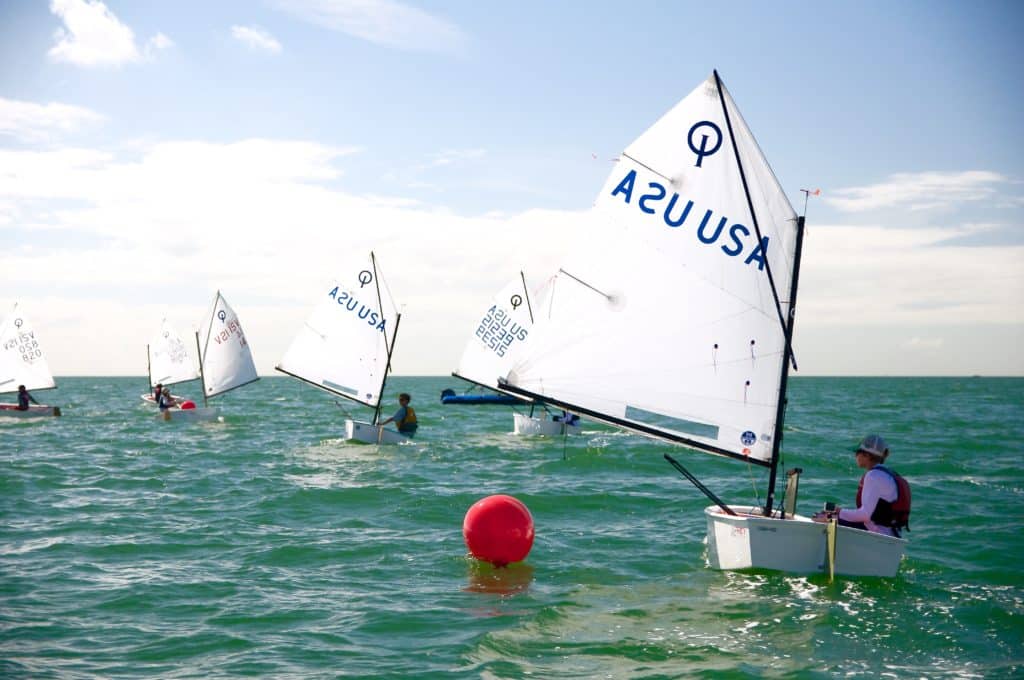
Sailors had the opportunity to try different sails over the two days, including the North Sails R1, R2, R4, and our latest design for the Optimist, the R5. Introduced this Summer, the R5 is made for specific weight ranges to increase point-ability. All sails in the R Series feature a radial cut.
Laura “Lulu,” who sails for Ft. Lauderdale Yacht Club tried the R2 product for the day. After three races in building breeze, she noticed when she put the bow down she was able to get speed while slowly pulling in her main to full trim.“I was able to hold my lane, even when it was thin, and could get the extra point while my overall boat speed got faster.”
“The R1 has the right amount of power,” said Samara from New York. “It is super easy to get the extra point off the line at the start, where it’s really important to be fast.”
North Optimist sails are designed to produce the most power for their sailor, keeping them fast and able to maintain even the thinnest lanes. As sailors at the clinic tried out the R Series, we asked Mike about the benefits of radial vs. cross cut Opti sails.
“Radial sails have a more forgiving shape than conventional cross cut sails. They hold their shape better under different wind velocities. North’s cross-cut sails are not all that different from the R Series, but over time the cross cut will definitely break down more than the radial will. Are radials more sensitive to trim? Potentially, but that is the result of a design shape, not necessarily a sail’s construction.”
Amongst the many things addressed over the course of the two-day clinic, Juan wanted to make sure the sailors came away with something that would motivate them and help further their sailing careers.“Put in time on the water. Don’t be lazy. Just get out there and spend as much time as you can on the water, in your boat. The clinic was an eyeopener for a lot of the kids who joined us, and it was nice to see the North designs bring success to those who used them over the course of the two days.”
Mike continued this sentiment from Juan.“I encouraged them to try things on their own, don’t just do what you are told to do. Go out there and try to come up with solutions to your own questions you may have, or why you might not be going as well as someone next to you. Compare your sailing to someone else’s by finding the things they are doing that maybe you aren’t, and then try those things to see if it helps your performance.”
Find out more at northsails.com/sailing/en/od/optimist
